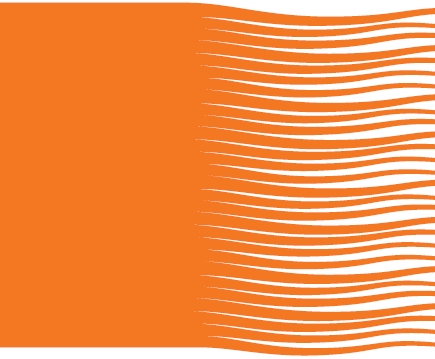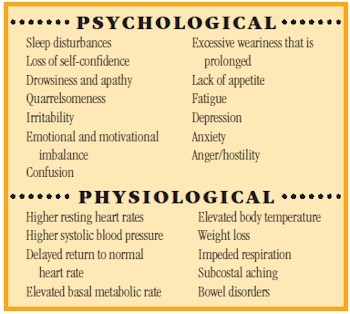Burnout Prevention
 Introduction
Introduction
Many of us expect to play well or win every time we go out onto the course. Before a round, if you ask a golfer what their goal is, 9 out of 10 times they will say to win. It’s not hard to see that when you watch golfers practice. Many of them practice for hours during the week, and if after so many hours they aren’t improving, they practice more.
There are two problems with this: With so much time spent practicing and playing, there isn’t time for anything else (balance), and without balance, athletes get burned out. Burnout is a common
occurrence among golfers. Golf generates extreme levels of physical and emotional stress, even in the most stable players.
Burnout in golfers
Why is burnout a common occurrence among golfers? As an individual sport, everything hinges on the individual player, which provides a lot of pressure – more so than doubles or a team environment. There are no substitutions, timeouts, or coaching during matches, and play rarely stops. Each decision about how and where to hit the ball is made by one person. What this means is that the individual’s self esteem and identity coincide with what happens on the course.
Being that a golfer’s self-esteem and identity coincide with what happens on the course, if they win, self-esteem will increase, but if they lose, failure is devastating and they have no one to blame but themselves. If a golfer continues to win every time, they are golden. Chances are that won’t happen. Losing, however, leads to more practice, harder practices, a blow to the player’s self-esteem, negative thinking, etc.
Winners practice what’s made them successful, and that doesn’t necessarily include a mindset of practicing longer or harder – although, if there is fear of hanging on to the #1 ranking, then they might. Golfers who lose practice more and practice harder because they feel they haven’t got “it” yet. It’s usually the latter, those who are fighting to get to the top, who burn out.
Symptoms of burnout
The following chart is a list of psychological and physiological signs and symptoms of burnout:

Some of these symptoms occur (on occasion) for a variety of reasons. However, if one of your golfers is experiencing more than one or two on a regular basis a nd it’s inconsistent with their normal homeostasis, then they are probably experiencing burnout.
There are numerous instruments and surveys that measure burnout, but perhaps the best way to analyze burnout is to make sure your golfers are paying attention to their body and finding ways to
be realistic about their training. Help your golfers learn to recognize when they are feeling physically and emotionally out of balance. There is a huge difference between being motivated to train a and pushing beyond what is realistic.
Prevention and treatment
Although the effects of burnout are partly physical, the basis of burnout is mental. One of the best ways to combat burnout is to help your golfers add a mental training plan to their physical training program. There are numerous easy ways to prevent and treat burnout:
- Identify sources of emotional stress on the course and techniques to reduce or eliminate them.
- Be aware of other sources of stress in life: work, home, school, finances, etc.
- Set short-term goals with incentives for reaching them. This helps prevent burnout and also enhances motivation. Meeting short-term goals provides a feeling of success, which enhances
self-esteem. - Talk to your golfers about finding someone to whom they feel comfortable communicating frustrations, anxieties and disappointments, particularly about their golf game (I would recommend your spouse as I think this already happens over beers for a lot of golfers).
- Help your golfers understand why it’s important to have days completely off from golf. For example, one reason the business world provides vacations is so that employees don’t get burned out and they have time to rejuvenate.
- Change up their practice. It’s easy to do the same workout, but psychologically and physically it’s better to switch it up.
- Talk to your golfers about using self-regulation skills (relaxation, imagery, goal-setting and positive self-talk). These skills can help ward off much of the stress that leads to burnout.
- Keep a positive outlook in their training environment and have fun.
It’s important to help your golfers look at the overall balance in their life to ensure they have other outside interests and are spending time with friends and family. And, are they good at taking care of themselves physically, acknowledging vulnerabilities, humanness and time constraints?
To completely recover from burnout, a golfer needs to remove himself or herself completely from the playing. Severe burnout takes months to recover from. Coming back to golf after burnout is a slow process and should include some or all of the above prevention tools.
Case Study
A highly-ranked college golfer called me about working with her. She was a senior and was making plans to go pro. Her next step was Q-school, but she was nervous because she was experiencing a loss of confidence, irritability, depression and fatigue. After our initial conversation, I assessed that she’d been dealing with symptoms of burnout for at least six months. Knowing that becoming a professional golfer is one of the most daunting challenges in all of sports, I suggested that she take a little time off, and we spent time working on what caused the burnout, how to deal with being burned out, and the other mental barriers that were getting in her way.
Within a few weeks of rest and eating right, she was already starting to feel much better. She started sleeping better and feeling a lot less depressed. In our sessions, we talked about how she dealt with the pressures of golf; mainly, by practicing a lot. This conversation is what led us to coming up with better ways to deal with the stress, anxiety, and pressure. I told her that if she practiced smarter she wouldn’t have to practice harder.
After a few weeks, she went back to playing a very limited amount of no-pressure golf. We set goals around getting her slowly back on her feet, and this helped to build her confidence back up. She was again starting to feel stronger and successful. A month or so of this and she started playing local tournaments. This is where we employed her mental game plan: A pre-tournament routine which helped her have the right amount of energy to start and build her up (versus down) to play, a pre-shot routine to avoid thinking about the mechanics of the shot, and a between-shot routine so she didn’t get distracted and stuck in thinking about mistakes.
You’ll be happy to know that my client’s sponsors offered her exemptions to tour events. She climbed her way up the money list and ended up being able to bypass Q-school. She was able to take a shortcut for being one of the very best golfers.
Conclusion
When golfers burn out, they feel physically, emotionally, and mentally exhausted. No one wants to experience that. It’s counterintuitive to why you practice so hard and so long. Burnout arises from a sense of distress and discontent and a perception of failing to achieve the ideals or goals that they’ve established. After repeated efforts to attain these goals and after working as hard as possible without complete success, feelings of failure develop along with negative attitudes towards life, work, other people, and oneself.
A golfer’s training program should not be too simple (it won’t challenge them enough) or too extreme (which eventually leads to burnout). Golfers need to do a better job of routinely assessing how they feel physically and mentally. When they started golf, they needed to assess their physical abilities. They also need to assess where they are mentally and emotionally to be successful and to observe fluctuations that lead to burnout.
USGTF contributing writer and bestselling author Dr. Michelle Cleere holds a Ph.D. in Clinical Psychology and an M.A. in Sports Psychology. An athlete herself, her passion is unlocking the power
of the mind so that athletes can play better and happier. Creator of the Beat the Demons™ System for Peak Performance, she coaches professional athletes, helping them to “beat their demons” so they can perform more consistently and win more without having to work harder. For more information, please visit Dr. Cleere’s website: www.DrMichelleCleere.com.




